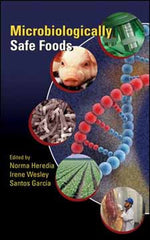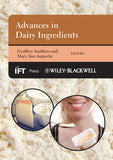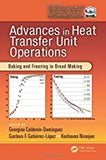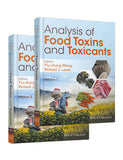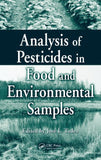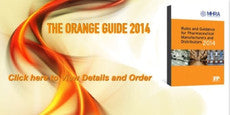Microbiologically Safe Foods edited by Norma Heredia
edited by Norma Heredia
Microbiologically Safe Foods focuses on state of the art technologies to produce microbiologically safe foods for our global dinner table. Each chapter summarizes the most recent scientific advances, particularly with respect to food processing, pre- and post-harvest food safety, quality control, and regulatory information.
The book begins with a general discussion of microbial hazards and their public health ramifications. It then moves on to survey the production processes of different food types, including dairy, eggs, beef, poultry, and fruits and vegetables, pinpointing potential sources of human foodborne diseases.
The authors address the growing market in processed foods as well novel interventions such as innovative food packaging and technologies to reduce spoilage organisms and prolong shelf life.
Each chapter also describes:
Other important topics include the safety of genetically modified organisms (GMOs), predictive microbiology, emerging foodborne pathogens, good agricultural and manufacturing processes, avian influenza, and bioterrorism.
Contents
Microbial Food Hazards
- Public health impact of foodborne illness: impetus for the international food safety effort
- Foodborne pathogens and toxins
Emerging Issues
- Cronobacter gen. nov. (enterobacter) sakazaki: current knowledge and future considerations
- Prion diseases
- Avian influenza A (H5N1): potential threat to food safety
Food Safety Issues and the Microbiology of Specific Commodities
- Food safety issues and the microbiology of beef
- Food safety issues and the microbiology of milk and dairy products
- Food safety issues and the microbiology of poultry
- Food safety issues and the microbiology of eggs and egg products
- Food safety issues and the microbiology of pork
- Food safety issues and the microbiology of fish and shellfish
- Food safety issues and the microbiology of fruits and vegetables
- Food safety issues and the microbiology of fruit beverages and bottled water
- Food safety issues and the microbiology of canned and frozen foods
- Food safety issues and the microbiology of cereals and cereal products
- Food safety issues and the microbiology of spices and herbs
- Food safety issues and the microbiology of mayonnaise, salad dressings, acidic condiments, and mayonnaise-based salads
- Food safety issues and the microbiology of chocolate and sweeteners
Prevention and Control Strategies
- Microbial risk assessment
- Good manufacturing practices
- Cleaning and sanitizing operations
- Hazard analysis of critical control points
- Traditional and high-technology approaches to microbial safety in foods
- Food preservation techniques other than heat and irradiation
- Food safety and innovative food packaging
Detection of Foodborne Pathogens
- Traditional methods for detection of foodborne pathogens
- Rapid methods for foodborne bacterial enumeration and pathogen detection
- Laboratory accreditation and proficiency testing
Current and Future Issues in Food Safety
- Bioterrorism and food safety
- Predictive microbiology: growth in silico
- Role of genetically modified organisms in food safety
Index

